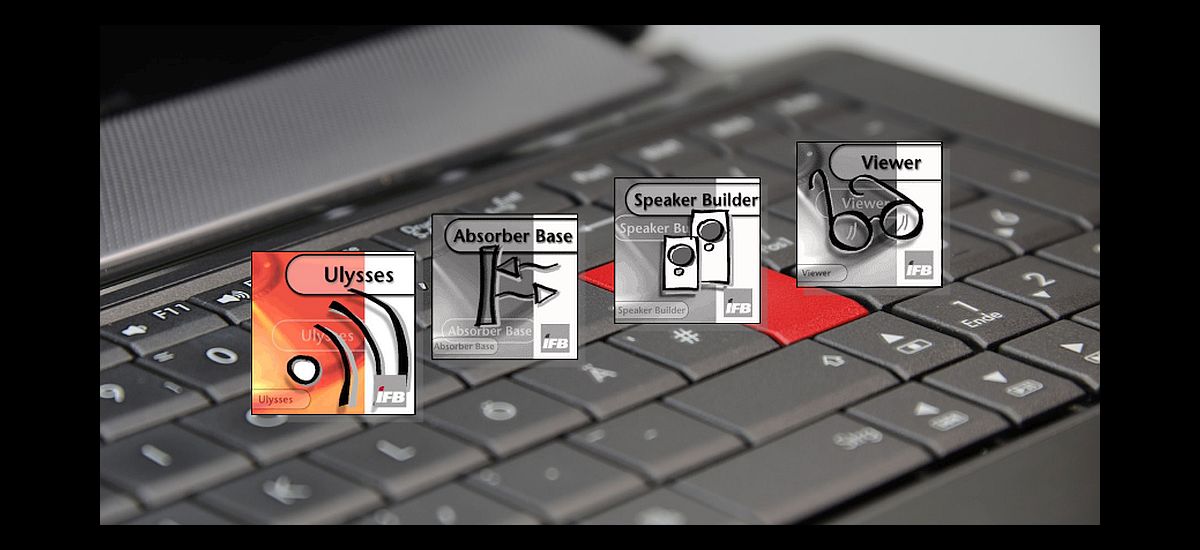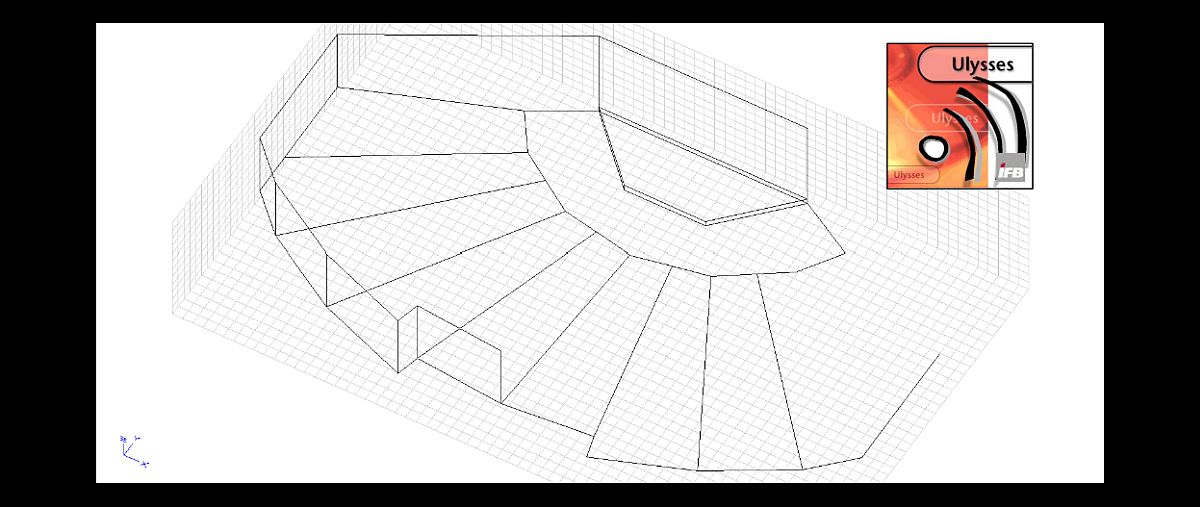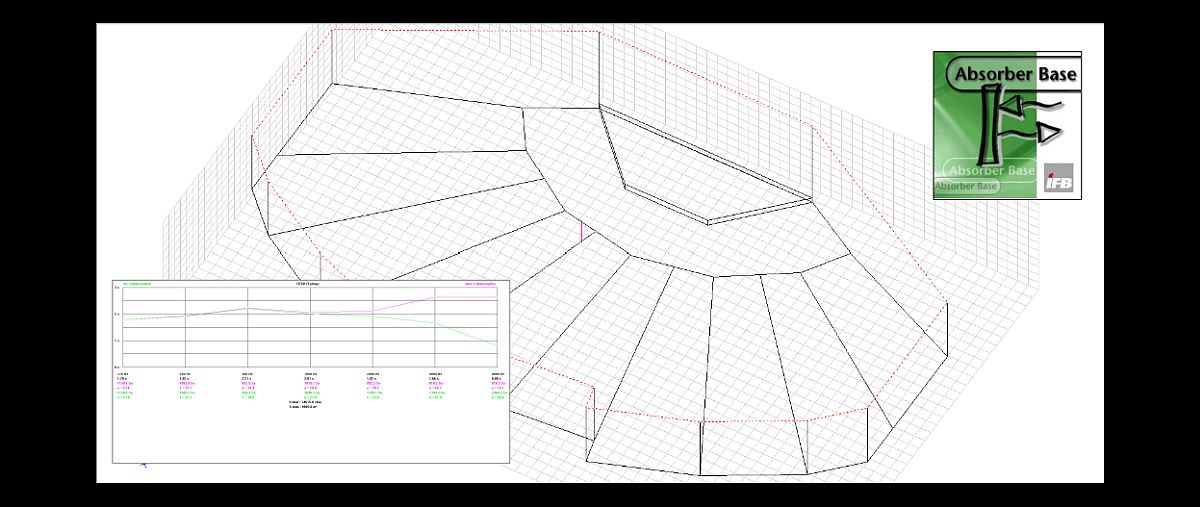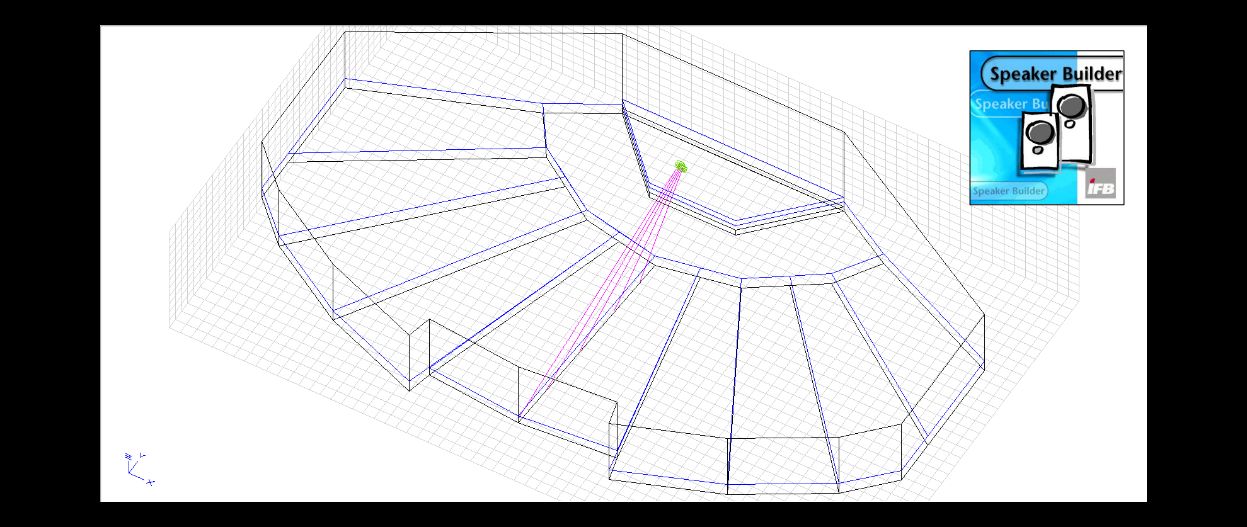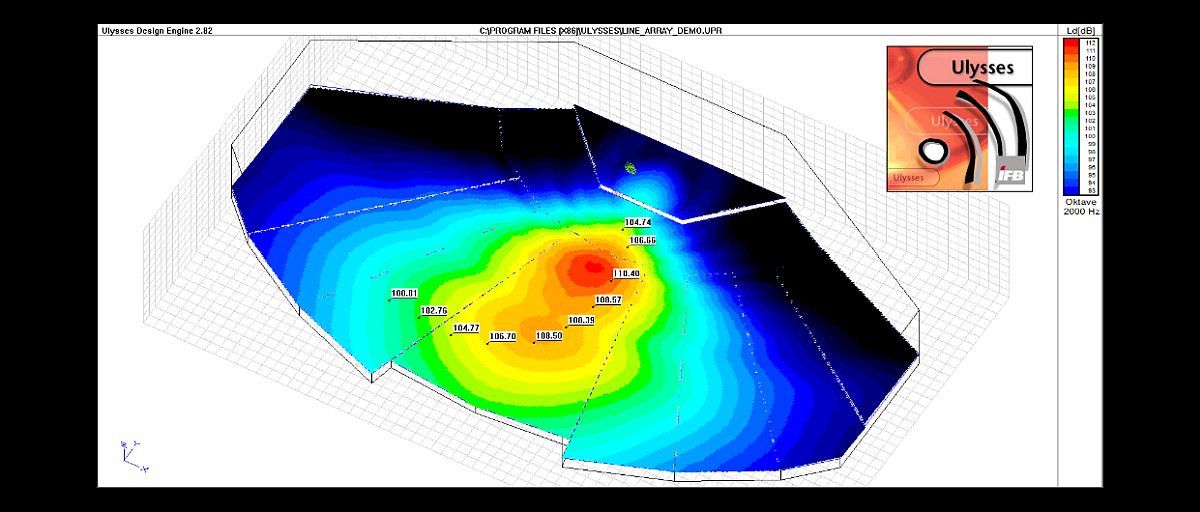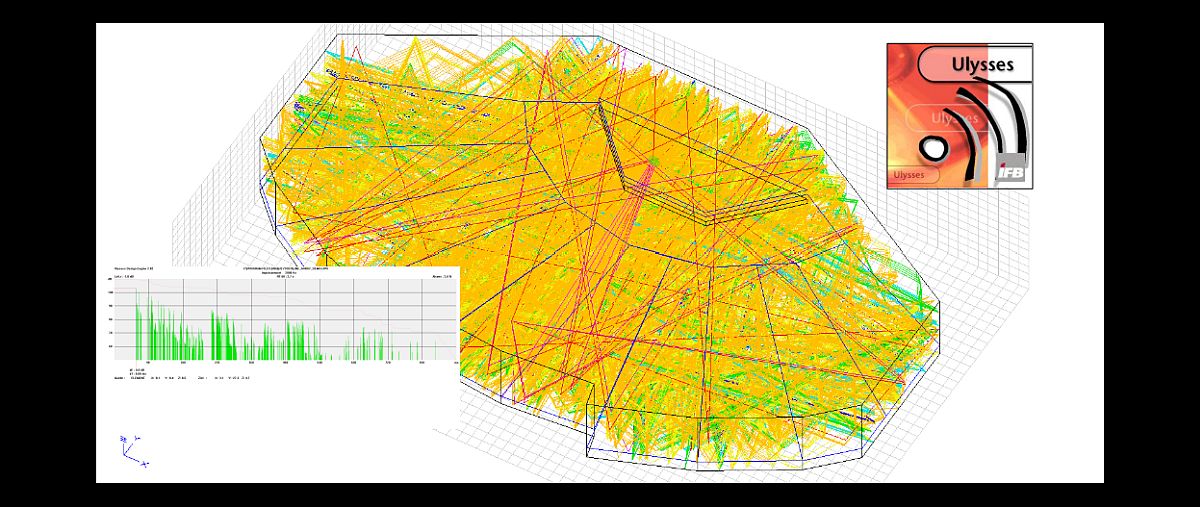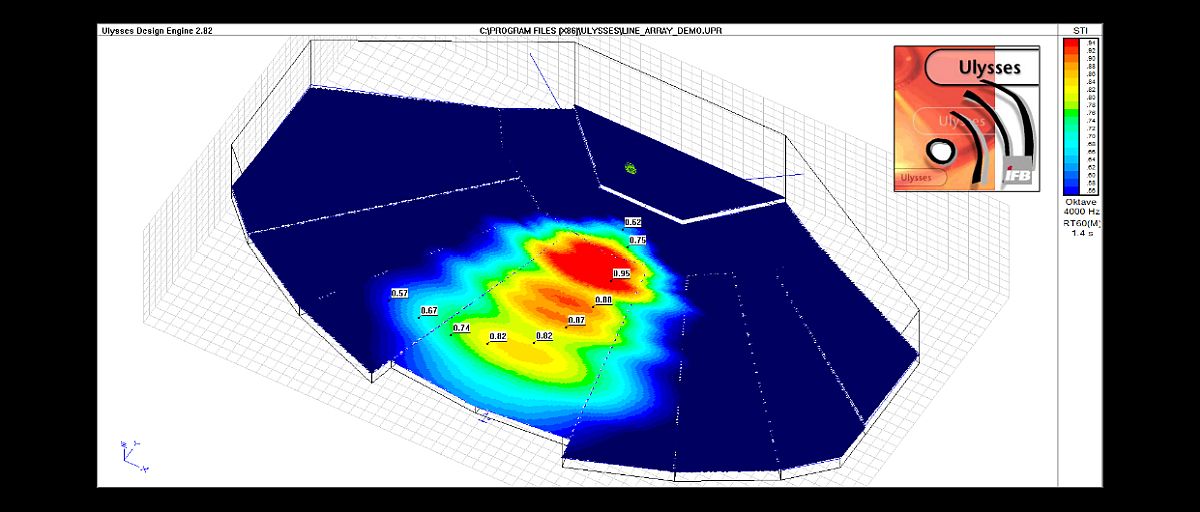The ULYSSES Design Engine, the ULYSSES Core
ULYSSES is as simple and straight forward as possible; there is no confusing variety of different modules for different calculations.
Everything takes place in the Design Engine, except for the creation and management of the absorber and speaker databases:
Creating and modifying models, defining or calculating room acoustics, and "installing" speakers and other sources.
Also all calculations such as reverberation times, direct sound levels, diffuse sound, intelligibility, ray tracing, ETC, auralization etc. are performed by the ULYSSES Design Engine.
And ULYSSES is extremely fast and stable thanks to the highly optimized and proven C ++ code compiled into a single file.
ULYSSES can therefore be used on almost any hardware.
There are absolutely no special hardware and software dependencies.
Try the fully working free demo on your desk-top, tablet or notebook.
With the smart built-in 3D-CAD functions you can quickly and easily create and edit room models of almost any complexity.
Functions such as copy, mirror, rotate, scale, move nodes, divide surfaces, rotate and extrude bodies make modeling and editing really very fast.
A built-in correction function helps you create models with correct volumes and valid surface orientations.
The functions include the assignment of absorption material (from the octave-based absorber databases) to the different room areas and the calculation of reverberation times RT60 according to Sabine, Fitzroy and Eyring.
In addition, target reverberation times (RT60) can be specified and the required absorption areas calculated.
If required, various acoustic sources can also be incorporated into the model and sound propagation, intelligibility (STI, ALCons), level distribution, etc. can be calculated.
The sources positioned in the model can be used to calculate the direct and diffuse sound level distribution, the overall sound pressure level, intelligibility values and other parameters.
Ray-Tracing and Energy-Time-Curve (ETC-presentations), Schroeder integration as well as auralisations are also possible.
In addition, reverberation times and intelligibility values can be determined from ray tracing results.
With the Design Engine, speakers (from the octave-based speaker databases) can be positioned, aligned, leveled, delayed and equalized in the model.
Thereafter, the level distribution of direct and diffuse sound, the total sound pressure level, the intelligibility values e. g.(STI, ALcons for voice alarm systems according to VDE 0833-4 and EN60849 / EN50849) and other parameters can be calculated.
A feature to handle speaker arrays or to convert several single speakers into arrays is also available.
Calculations of ray tracing and energy time curve (ETC), Schröder integration and auralizations (audible) are possible,too.
ULYSSES is switchable from metric (metric units such as m) to imperial (US units such as feet)
There is also a ULYSSES version with English user interface available. In both language versions, units can be metric (metric units such as m) are switched to imperial (US units such as feet).
Saving and exporting models requires a license for the ULYSSES Design Engine.
A demo version for testing all functions, but without the ability to save and export projects is also available.
Operating Systems, Hardware, Licensing
ULYSSES can be installed on all Microsoft Windows 32 and 64 bit operating systems (Win 95 through Win 10).
Of course, ULYSSES also runs on Mac OS and on Linux (with WINE etc.) 32 and 64 bit operating systems as well as on virtual machines..
The hardware requirements are minimal. ULYSSES runs on 256MB RAM on almost all processors starting at 486DX. The free space on the hard disk should be at least 500MB.
On modern hardware, the simulation calculations are correspondingly faster. So: the faster the processor, the faster it can be simulated.
A mouse, a trackball, a touchpad, etc., and a keyboard with function keys (F1-F12) are highly recommended because of the input capabilities in the 3D CAD engine!
The graphics card must have at least one high-color card with min. 800x600 pixels.
For auralizations (auditioning), a sound card with 16Bit / 44.1kHz adjustment is required.
ULYSSES must be installed locally and can not be installed or run on a server as a server-client service.
ULYSSES licenses are always assigned to a computer and are tied directly to the hardware of the computer.
If you need to format or change the hard disk, or if you want to use another computer, they will change Computer identification number. and you need new, matching license number. This matching license no. need to be special for the "New" or "modified" machine will be generated.
Registered full-version users will only be charged a processing fee for a full calendar year no more licenses are renewed than you own in total.
Registered full-version users will only be charged a processing fee for a full calendar year
no more licenses to be renewed than you own in total.
You want to know more or buy a license?
Need help with ULYSSES?
Contact us.

